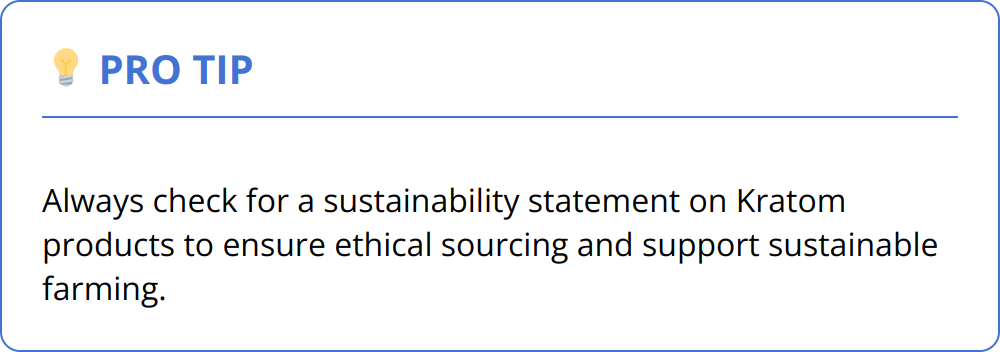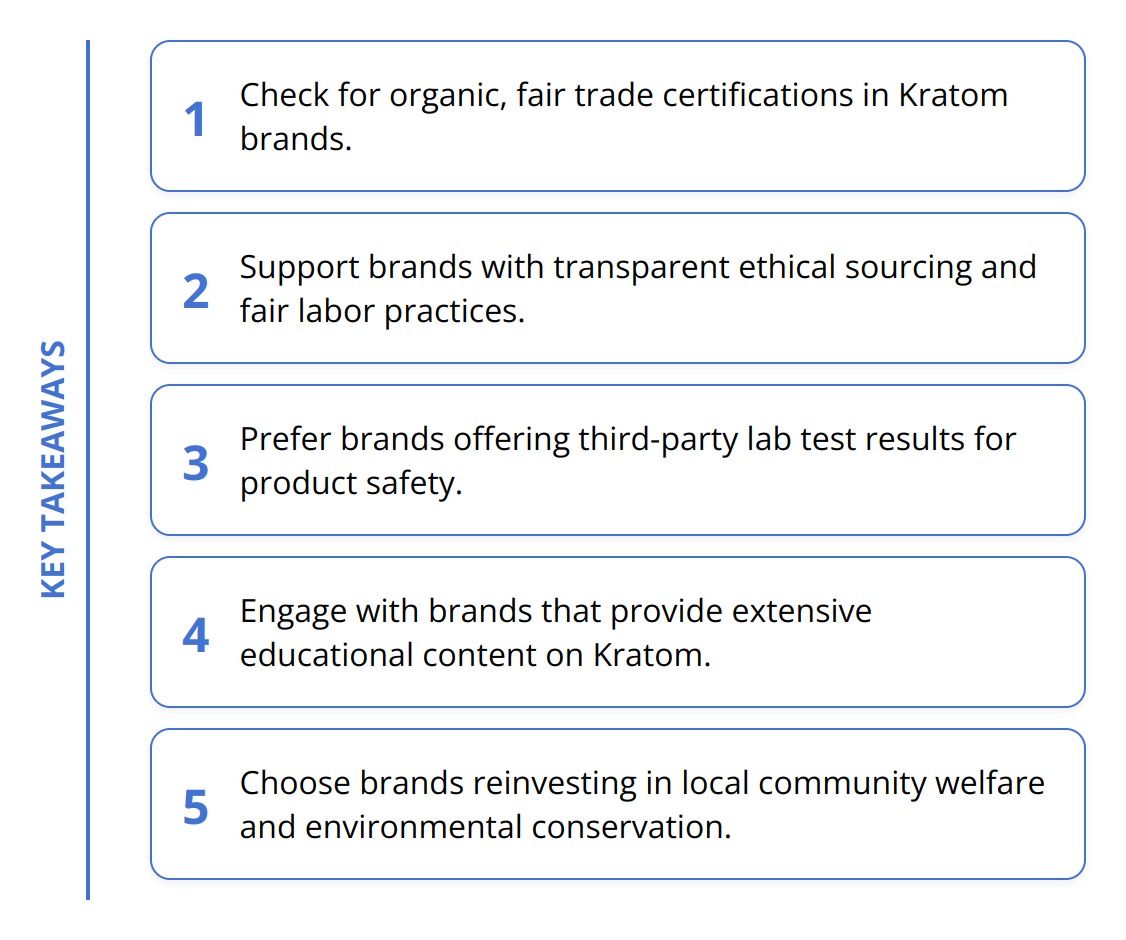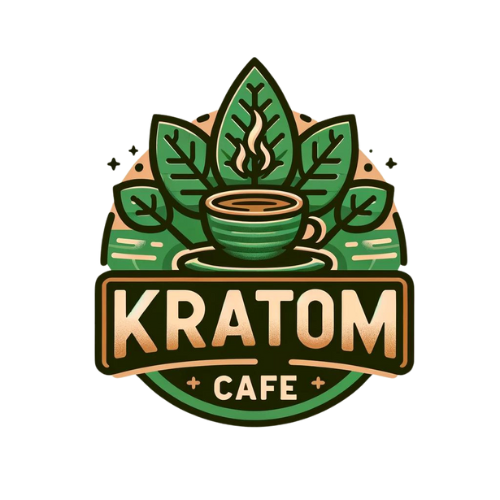In an industry where sustainability is becoming more than just a buzzword, certain practices set the leaders apart. We at Kratom Cafe believe that understanding the nuances of sustainable efforts in the Kratom sector is key for consumers. This post walks you through the hallmarks of brands that prioritize the planet and its people. From farming to community engagement, get ready to learn what makes a Kratom brand genuinely sustainable.
Sustainable Kratom Farming
In the rapidly expanding world of Kratom, the shift towards sustainable farming practices is not just commendable but necessary for the longevity of the industry and the preservation of the planet. Sustainable practices in Kratom farming involve a series of steps and commitments that range from the field where Kratom is grown to the final product reaching the consumer.
The Essence of Organic Farming
Organic farming stands at the forefront of sustainable agriculture, ensuring that the Kratom plants grow in their natural habitat without the interference of synthetic fertilizers and pesticides. This approach not only maintains soil health but also conserves water, reduces pollution, and ensures that the kratom produced is of the highest quality. For consumers looking for organic options, understanding the sourcing and farming methodologies of their chosen brand is vital.
Ethical Sourcing: Beyond the Farm
A genuinely sustainable Kratom brand extends its commitment beyond just organic farming to embrace fair trade practices and ethical sourcing. This means ensuring that the farmers and workers involved in the cultivation process are paid fairly, work in safe conditions, and are given opportunities for professional growth. Ethical sourcing is pivotal in building a sustainable business model that respects human rights and the economic well-being of the communities involved.
Preserving Natural Habitats
Conservation of natural habitats is another critical aspect of a sustainable Kratom brand. The biodiversity of the regions where Kratom is cultivated must be protected to prevent the degradation of ecosystems. Sustainable brands often engage in or support activities that aim to preserve the environment, such as reforestation projects or educational programs aimed at promoting conservation among local communities.

Practical Tips for Consumers:
-
Look for certifications: Brands committed to sustainability often have organic, fair trade, or similar certifications.
-
Research the brand’s impact: Many sustainable Kratom brands are transparent about their environmental conservation efforts and community engagement activities.
-
Support ethical sourcing: Choose brands that prioritize fair labor practices and contribute positively to the communities where Kratom is grown.
In conclusion, the pillars of sustainable Kratom farming – organic agriculture, ethical sourcing, and conservation efforts – not only ensure the production of high-quality Kratom but also protect our planet and support fair and ethical business practices. As consumers, opting for brands that adhere to these principles can make a significant impact.
For more detailed insights on responsible Kratom use, visit Kratom for wellness.

Why Transparency Matters
Achieving sustainability in the kratom industry isn’t just about adopting green practices; it’s equally about maintaining transparency and rigorous quality control. This sector faces scrutiny due to varying global legal and health and safety standards, making trust and reliability paramount. Brands leading the way in sustainability are those that go the extra mile to prove the purity and safety of their products through third-party lab testing and offer full disclosure about their sourcing and manufacturing processes.
The Necessity of Third-party Lab Testing
Independent lab testing is a cornerstone of a transparent kratom brand. It ensures that products are free from contaminants like heavy metals, pesticides, and bacteria. Moreover, it verifies the presence of key alkaloids responsible for kratom’s effects, underpinning the product’s efficacy. For individuals looking to incorporate kratom into their wellness routine, trusting a brand that invests in rigorous testing is a smart choice. Always check for lab results on a brand’s website before making a purchase.
Full Disclosure is Key
Another critical aspect of a transparent brand is its willingness to share detailed information about where and how their kratom is sourced and processed. A brand that is open about its farm locations, the farming practices employed, and the manufacturing process of its products demonstrates a commitment to both quality and ethical standards. This openness not only fosters trust with consumers but also encourages accountability within the industry.
Engaging and Educating Customers
Engagement and education are strategic ways brands can promote transparency. By offering extensive educational content on their website, such as details on different kratom strains or how to safely use kratom, brands can empower consumers to make informed choices. Moreover, fostering a community where users can share experiences and insights further reinforces a brand’s commitment to transparency and quality. An educated customer is more likely to discern and appreciate the efforts of a transparent brand.
Practical Insights:
-
Always verify the availability of lab test results on a brand’s website.
-
Review the details of sourcing and manufacturing processes shared by the brand.
-
Utilize educational resources provided by the brand to deepen your understanding of kratom.
-
Participate in community forums to learn from others’ experiences with the brand.

Transparency in the kratom industry bridges the gap between sustainable practices and consumer trust. It empowers users to make choices that align with their values of quality, safety, and ethical responsibility. As we continue to advocate for sustainability in the kratom industry, supporting brands that exemplify transparency and quality control is a powerful way to contribute to a more sustainable future.
Explore further on kratom user reviews for insights on the best practices and experiences shared by the kratom community.
Boosting Community Welfare
Sustainable Kratom brands don’t just stop at environmental conservation; they actively boost the welfare of the local communities where Kratom is cultivated. The positive impact on these communities is multifaceted, involving support for local farmers, launching environmental initiatives, and promoting health and safety within the Kratom community.
Supporting local farmers and their communities involves more than just fair pay. It’s about providing them with the skills, tools, and knowledge they need to thrive. Engaging in practices like offering agricultural education, ensuring access to clean water, and supporting healthcare initiatives can significantly enhance the quality of life for these communities.
Moreover, environmental initiatives such as reforestation and waste management programs not only protect the ecosystem but also instill a sense of responsibility and belonging among community members. Kratom brands can play a crucial role in funding and organizing these programs, creating a sustainable cycle that benefits both the environment and the people.
Health and safety within the Kratom community exceed ensuring a clean, uncontaminated product. It’s about promoting responsible use of Kratom through educational outreach, supporting research into the effects and potential risks of Kratom, and advocating for policies that protect consumers while allowing access to this botanical.
Here are practical ways consumers can support sustainable Kratom brands that prioritize community welfare:
-
Choose brands that document their community engagement efforts. Transparency about these efforts is a good indicator of their commitment.
-
Support companies that reinvest a portion of their profits into the local communities where Kratom is sourced.
-
Engage with brands that offer educational content on safe Kratom use and advocate for consumer rights.
Understanding the broader impact of your purchase decisions is vital. By choosing brands that are committed to community welfare, consumers can contribute to creating a positive cycle of growth and sustainability. For more insights into how Kratom can be used for wellness while considering safety and sustainability, explore how to use Kratom for wellness.
In essence, the true mark of a sustainable Kratom brand is its dedication to not just preserving the environment but uplifting the very communities that cultivate this remarkable plant. By prioritizing these elements, consumers can enjoy high-quality Kratom while contributing to a brighter future for these communities.


Final Thoughts
Sustainable kratom brands distinguish themselves through practices that honor the earth, foster community welfare, and uphold transparency. These brands are not just selling a product; they are offering a promise to contribute positively to the planet and its inhabitants. The key differentiators of such brands include:

-
Commitment to organic farming
-
Engagement in ethical sourcing
-
Efforts towards conservation
-
Rigorous third-party lab testing
-
Openness about sourcing and manufacturing
-
Investment in community welfare
Supporting sustainable practices in the kratom industry is more than a choice; it’s a responsibility. By choosing brands that prioritize sustainability, consumers can ensure they are part of a positive impact on the environment and the communities involved in kratom cultivation. This choice not only speaks to personal ethics but also supports a future where the kratom industry thrives on principles of sustainability and transparency.
At Kratom Cafe, we are passionate about providing our readers with accurate, comprehensive information on all things kratom. We believe in the power of informed choices and the impact they can have on the broader community and the environment. Through education and advocacy, we strive to be a part of the sustainable future of the kratom industry.
For those who wish to explore more about this remarkable plant and make informed decisions based on sustainability and ethical practices, Kratom Cafe is your go-to source. Join our community and contribute to a sustainable kratom future.

